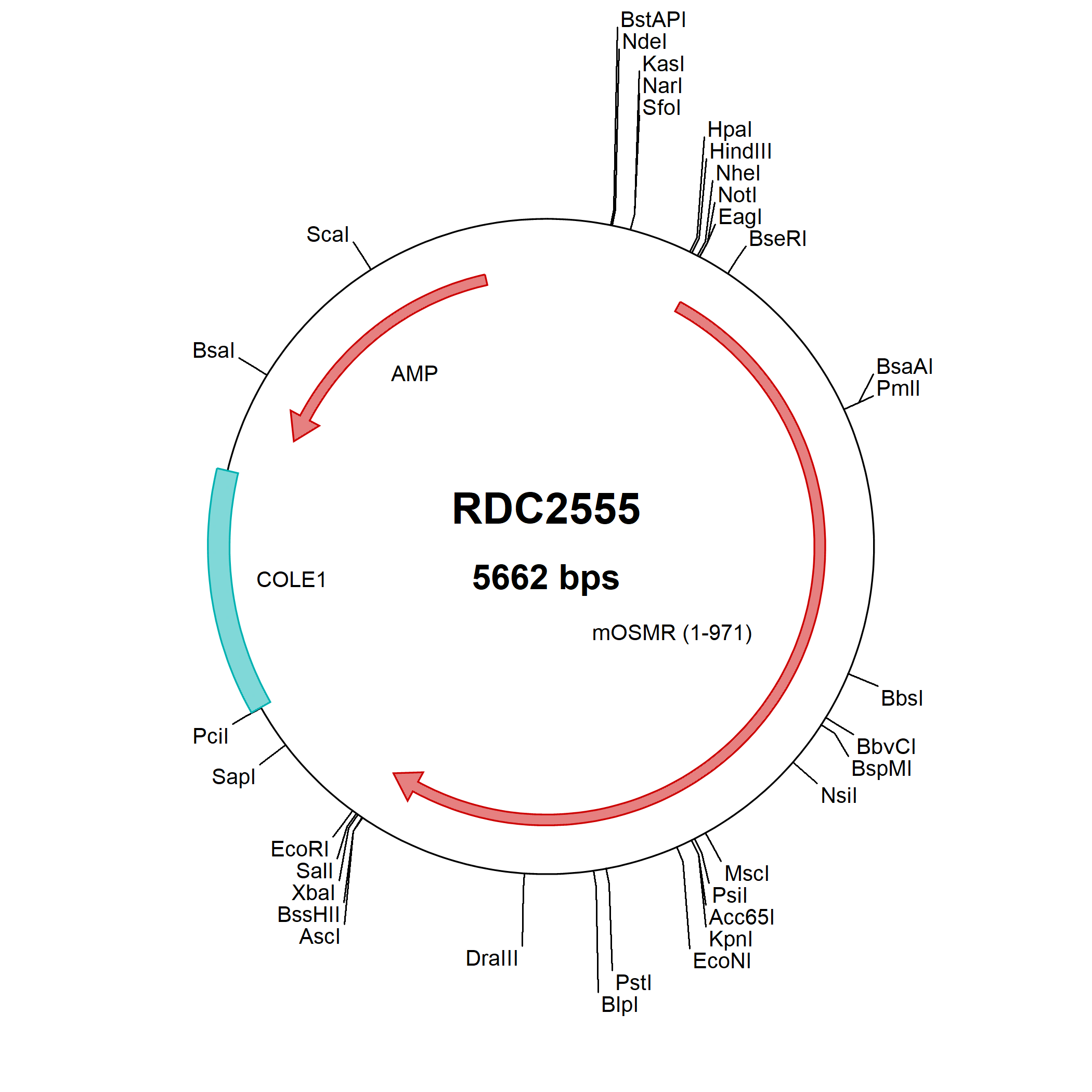Mouse OSMR beta (AAC40122) VersaClone cDNA Summary
Specifications
Product Datasheets
Background: OSMR beta
Oncostatin M (OSM) is a cytokine originally isolated from medium conditioned by PMA-treated U-937 human histiocytic leukemia cells based on its ability to inhibit growth of A375 melanoma cells. The human OSM cDNA encodes a 252 amino acid pre-pro-OSM polypeptide with a 25 residue hydrophobic signal peptide and a hydrophilic C-terminal domain that are proteolytically processed to generate the 196 residue mature form of OSM. Although both mature and pro-OSM are equally active in radio-receptor assays, the mature OSM is 5- to 60-fold more active in growth inhibition assays. Thus, proteolytic processing of the pro-OSM peptide may be important in regulating the in vivo activities of OSM. OSM initiates its biological activities by binding to specific cell surface receptors. The gp130, a signal transducing component (beta subunit) of the IL-6, LIF and CNTF receptor complexes, was identified as a low-affinity OSM receptor that does not transduce OSM signals. The low affinity LIF receptor (LIF R, a gp130-related protein) has now been identified to be a component of a high-affinity OSM receptor that will transduce OSM signals. Since OSM is also active on cells that do not express LIF R, a specific OSM receptor that does not involve LIF R must also exist. Besides its growth inhibitory activities on human A375 melanoma and mouse M1 myeloid leukemic cells, as well as on other solid tumor cells, OSM also has growth stimulatory activities on normal fibroblasts, AIDS-Kaposis sarcoma cells, and a human erythroleukemia cell line, TF-1. Other OSM-mediated activities reported to date include: stimulation of plasminogen activator activity in cultured bovine aortic endothelial cells, regulation of IL-6 expression in human endothelial cells, and stimulation of LDL uptake and up-regulation of cell surface LDL receptors in HepG2 cells.
Human Oncostatin M (OSM) signals through two types of human OSM receptor complexes: the type I complex comprising the leukemia inhibitory factor receptor beta (LIF R beta) and gp130 and the type II complex made up of OSM receptor beta (OSM R beta) and gp130. In contrast, mouse OSM signals only through the mouse OSM R beta and gp130 complex. Human and mouse OSM R beta are 55% identical at the amino acid sequence level.
FAQs
No product specific FAQs exist for this product, however you may
View all cDNA Clone FAQsReviews for Mouse OSMR beta (AAC40122) VersaClone cDNA
There are currently no reviews for this product. Be the first to review Mouse OSMR beta (AAC40122) VersaClone cDNA and earn rewards!
Have you used Mouse OSMR beta (AAC40122) VersaClone cDNA?
Submit a review and receive an Amazon gift card.
$25/€18/£15/$25CAN/¥75 Yuan/¥2500 Yen for a review with an image
$10/€7/£6/$10 CAD/¥70 Yuan/¥1110 Yen for a review without an image

